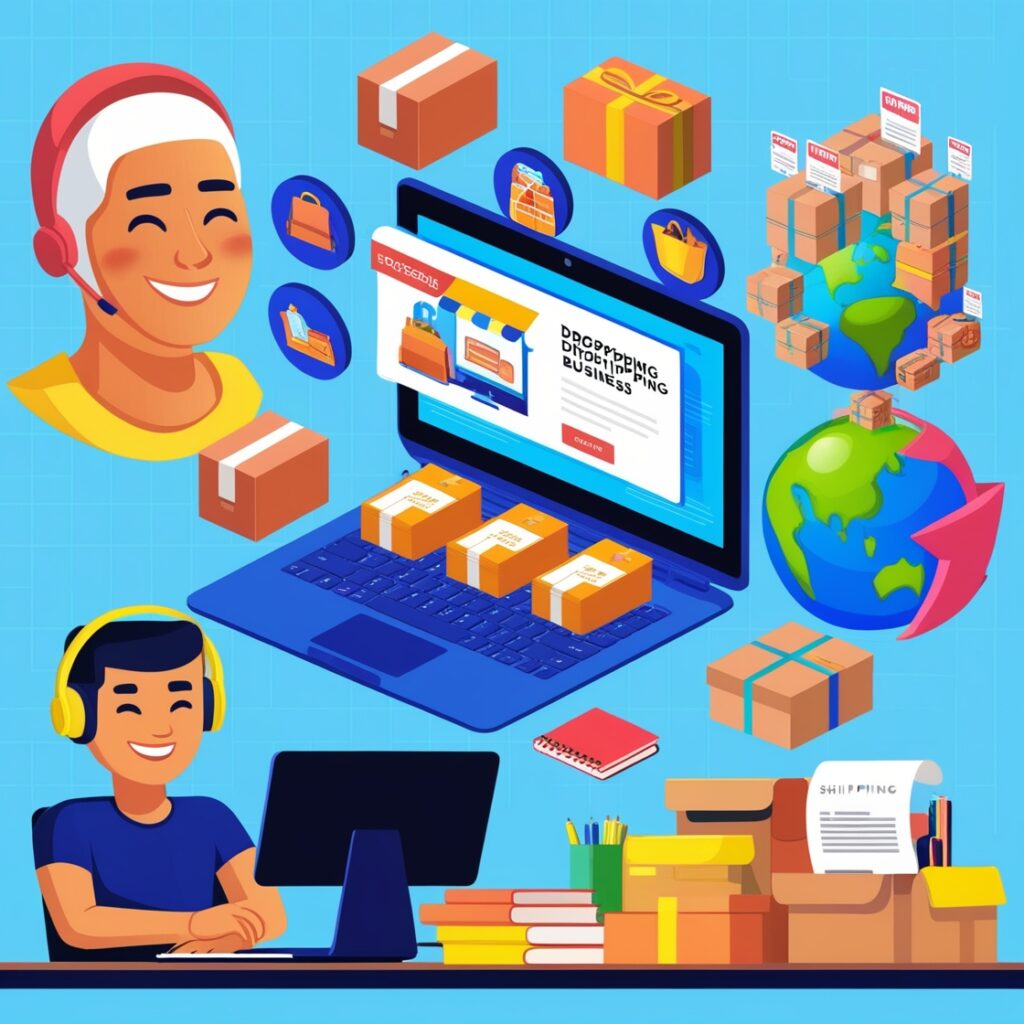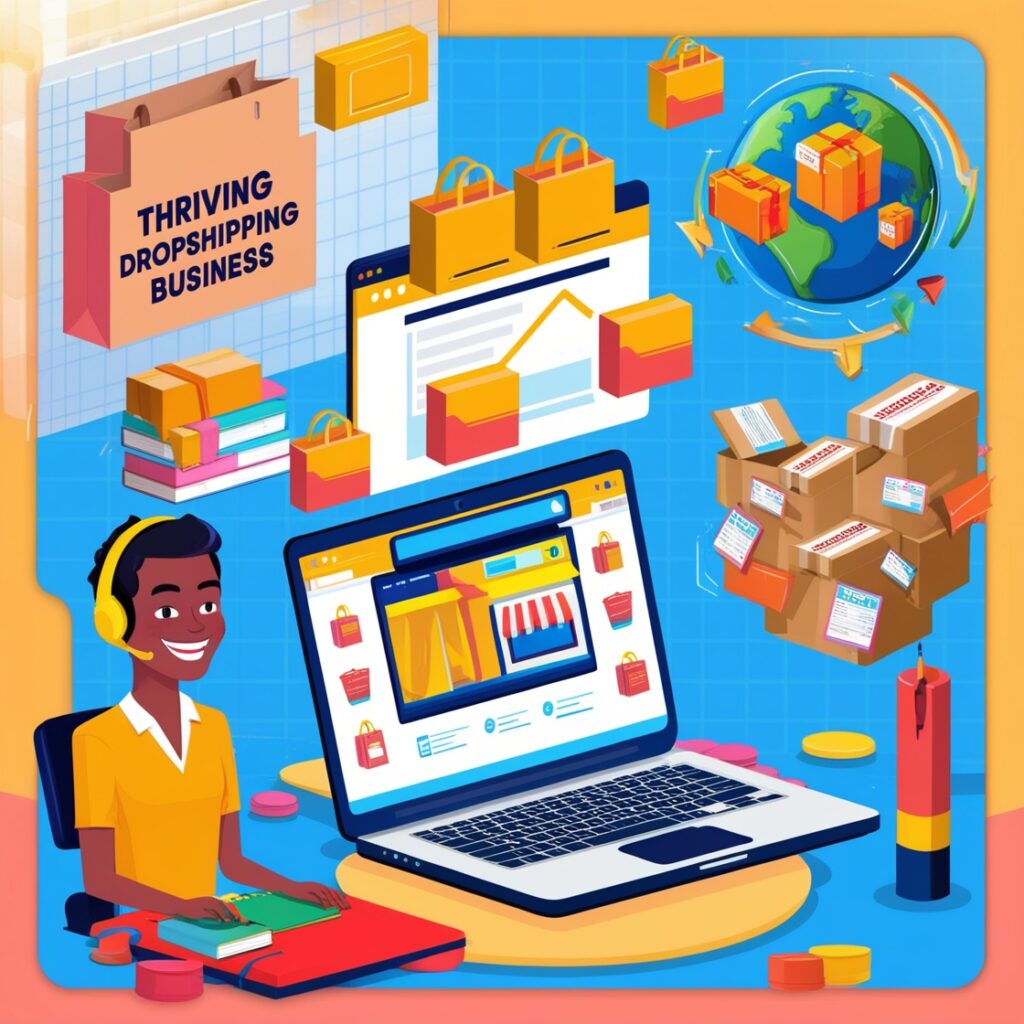Dropshipping is one of the most popular business models in e-commerce today, thanks to its low startup costs and flexibility. By automating key aspects of your dropshipping business, you can save time, reduce errors, and scale faster. If you’re eager to learn how to build and automate a dropshipping business, this step-by-step guide will help you get started.
What is Dropshipping?
Dropshipping is a retail fulfillment method where the store doesn’t stock products it sells. Instead:
1. A customer places an order on your website.
2. You forward the order to a supplier.
3. The supplier ships the product directly to the customer.
Why Automate Your Dropshipping Business?
Automation in dropshipping simplifies operations, enabling you to:
• Save Time: Automate tasks like inventory updates and order processing.
• Minimize Errors: Ensure accurate order fulfillment.
• Focus on Growth: Spend less time on repetitive tasks and more on marketing.
• Scale Easily: Manage higher order volumes without extra manual effort.
How to Build a Dropshipping Business
1. Choose a Niche
Your niche defines your target audience and products. To select a profitable niche:
• Research trends using tools like Google Trends or Statista.
• Look for products with low competition and high demand.
• Focus on niches you’re passionate about for better engagement.
2. Find Reliable Suppliers
Suppliers are the backbone of your business. Use platforms like:
• AliExpress: A popular choice for dropshipping beginners.
• CJ Dropshipping: Offers faster shipping and product customization.
• SaleHoo: A directory of vetted suppliers.
Ensure suppliers offer:
• Consistent product quality.
• Competitive pricing.
• Timely shipping.
3. Set Up Your Online Store
Choose an e-commerce platform to build your store:
• Shopify: Beginner-friendly and ideal for dropshipping automation.
• WooCommerce: Great for WordPress users with more customization needs.
• BigCommerce: Suitable for scaling dropshipping businesses.
Key Elements of Your Store:
• Mobile-Friendly Design: Ensure smooth browsing on smartphones.
• Clear Product Descriptions: Highlight key features and benefits.
• Secure Payment Gateway: Use options like PayPal or Stripe.
4. Integrate Dropshipping Tools
Dropshipping tools simplify store management. Popular options include:
• Oberlo: Automates product importing and order fulfillment (Shopify integration).
• DSers: An AliExpress-focused tool for bulk orders.
• Spocket: Provides access to high-quality, fast-shipping products.
5. Drive Traffic to Your Store
To attract customers, focus on:
• Search Engine Optimization (SEO): Optimize product pages with keywords.
• Social Media Marketing: Use platforms like Instagram and TikTok to promote your products.
• Paid Ads: Run targeted Facebook or Google Ads campaigns.
How to Automate a Dropshipping Business
1. Automate Product Sourcing
Tools like Oberlo and Spocket can automatically:
• Sync supplier inventory with your store.
• Update prices based on supplier changes.
2. Automate Order Fulfillment
When customers place orders, automation tools forward the details to suppliers, reducing manual effort. For example:
• Shopify Flow: Automates order tagging and fulfillment tasks.
• Zapier: Connects e-commerce apps for seamless workflows.
3. Automate Customer Support
Improve response times with:
• Chatbots: Tools like Zendesk and Tidio handle common inquiries.
• AI-Powered FAQs: Automatically answer repetitive questions.
4. Automate Marketing
Marketing automation ensures consistent engagement:
• Email Campaigns: Use Mailchimp or Klaviyo for personalized email marketing.
• Retargeting Ads: Tools like AdRoll help bring back potential customers.
Challenges in Dropshipping Automation and Solutions
1. Inventory Issues
• Challenge: Suppliers run out of stock without notifying you.
• Solution: Use tools with real-time inventory updates, like DSers.
2. Long Shipping Times
• Challenge: Slow delivery frustrates customers.
• Solution: Partner with local suppliers or use services like CJ Dropshipping.
3. Quality Control
• Challenge: Inconsistent product quality affects customer satisfaction.
• Solution: Order test samples from suppliers before listing products.
Benefits of Automating Your Dropshipping Business
1. Scalability: Handle thousands of orders with ease.
2. Efficiency: Free up time for strategic tasks.
3. Consistency: Reduce errors in order processing and inventory management.
4. Improved Customer Experience: Faster response times and seamless operations.

Future Trends in Dropshipping Automation
• AI Integration: Advanced AI tools will predict customer preferences and suggest better products.
• Voice Commerce: Automation tools will enable voice-activated shopping experiences.
• Blockchain for Transparency: Improved tracking and supplier accountability through blockchain technology.
Conclusion
Building and automating a dropshipping business allows you to streamline operations and focus on growth. By choosing the right tools, optimizing workflows, and staying ahead of trends, you can create a profitable and scalable e-commerce venture.
Start today, and let automation pave the way for your dropshipping success!




Your article helped me a lot, is there any more related content? Thanks!
Thank you for your sharing. I am worried that I lack creative ideas. It is your article that makes me full of hope. Thank you. But, I have a question, can you help me? https://accounts.binance.com/si-LK/register-person?ref=V2H9AFPY
Can you be more specific about the content of your article? After reading it, I still have some doubts. Hope you can help me.
Great post! This is so helpful! You picked a key topic to focus on. I made a free guide that shows how to build an email marketing plan step by step. It covers setting goals, tracking results, and fixing common mistakes. Visit the link to see it. Thanks for sharing such helpful, straightforward tips!
Thanks for sharing. I read many of your blog posts, cool, your blog is very good.
Thanks for sharing this valuable post! Quick heads-up— the cheapest cloud web hosting just dropped its prices even further, but only until April 17th! Snag this unbeatable deal before it’s gone!
Thanks for the valuable post! Hey did you know about this? You can craft high-quality content with just one click, tailored specifically to your brand’s voice and target audience. Create and publish your content all in one platform By MAVIC. VIsit the link.
If you’re running a WooCommerce store and looking for reliable, lightning-fast hosting that’s both scalable and easy to manage, I recently came across a helpful guide that dives into why Cloudways is a top choice for WooCommerce hosting. It covers everything from performance features like caching and CDN to scalability and security. Definitely worth checking out if you’re serious about speed and growth!
If you’re running a WooCommerce store and looking for reliable, lightning-fast hosting that’s both scalable and easy to manage, I recently came across a helpful guide that dives into why Cloudways is a top choice for WooCommerce hosting. It covers everything from performance features like caching and CDN to scalability and security. Definitely worth checking out if you’re serious about speed and growth!
Great insight! Managing cloud servers often seems complex, but Cloudways takes the stress out of the equation. Their platform delivers powerful performance without the usual technical headaches. It’s an ideal solution for those who want scalable hosting without getting lost in server configurations. Definitely worth checking out for a smoother hosting journey. Keep up the excellent work! Explore more through the link.